



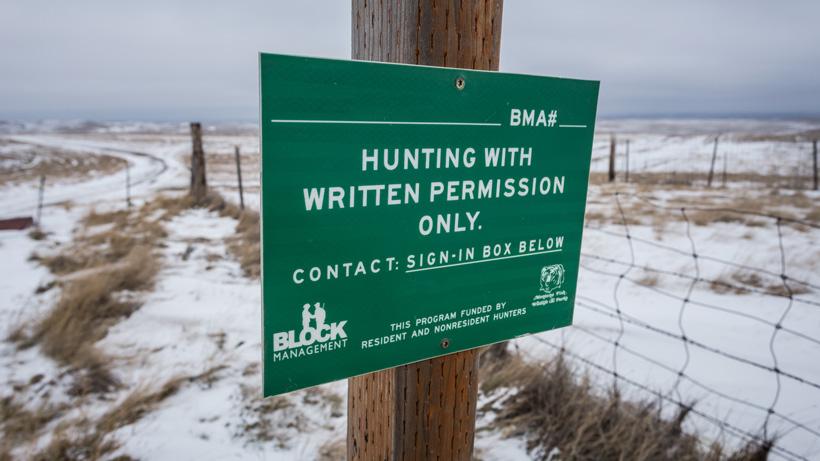
Here is an example of what you'll look for when signing in at a BMA box.
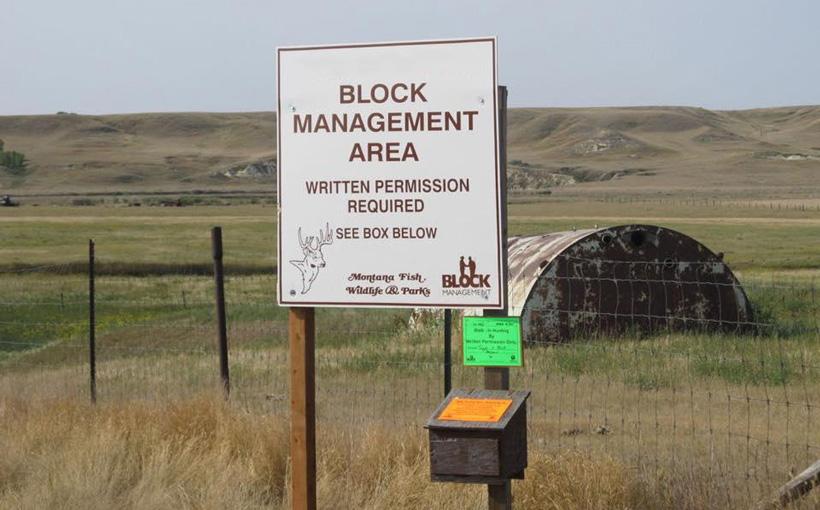
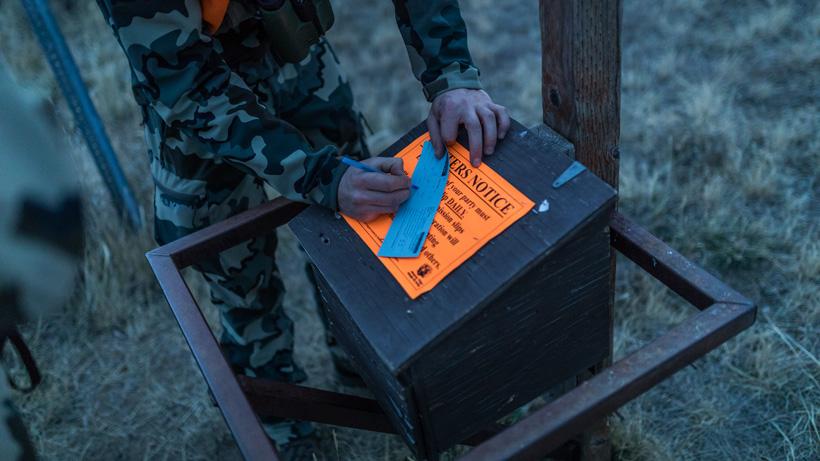
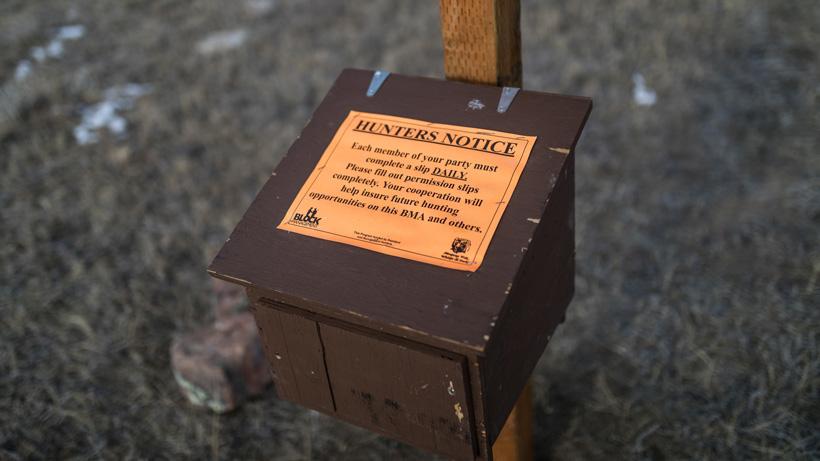
Region | 1 |
|---|---|
Total # of BMAs | 16 |
Total #of acres | 710,000 |
Region | 2 |
Total # of BMAs | 70 |
Total #of acres | 540,000 |
Region | 3 |
Total # of BMAs | 87 |
Total #of acres | 529,000 |
Region | 4 |
Total # of BMAs | 130 |
Total #of acres | 1,290,000 |
Region | 5 |
Total # of BMAs | 110 |
Total #of acres | 554,000 |
Region | 6 |
Total # of BMAs | 198 |
Total #of acres | 1,260,000 |
Region | 7 |
Total # of BMAs | 259 |
Total #of acres | 2,138,356 |
Region | State |
Total # of BMAs | 870 |
Total #of acres | 7,021,356 |
Region | Total # of BMAs | Total #of acres |
|---|---|---|
1 | 16 | 710,000 |
2 | 70 | 540,000 |
3 | 87 | 529,000 |
4 | 130 | 1,290,000 |
5 | 110 | 554,000 |
6 | 198 | 1,260,000 |
7 | 259 | 2,138,356 |
State | 870 | 7,021,356 |
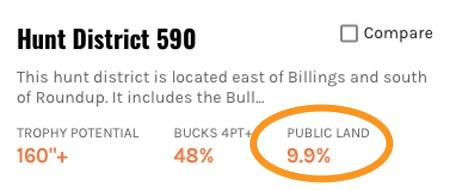
While Montana has a ton to offer to any western hunter, perhaps the most important factor is the access. In fact, Montana has just over 33 million acres of publicly accessible lands, giving hunters a plethora of options when it comes to their outdoor adventures. Along with all of the state’s public land, Montana Fish Wildlife and Parks (FWP) also offers free public hunting opportunities on privately-owned land through its Block Management Program (BMA). The online version of the Block Management Hunting Access Guides can be viewed here.
Originally formed in 1985, the Block Management Program was implemented in an effort to provide free hunting opportunities on private land. Within the program, qualifying landowners can voluntarily offer access to their private land to the state’s hunting populations under a myriad of rules and regulations as agreed upon by the landowner and state officials. Last year, 1,324 landowners participated in the program and enrolled approximately 7.3 million acres for Montana hunters to enjoy. The areas enrolled in the BMA program vary in size, ranging from 50 acres to over 100,000 acres.
As stated earlier, hunting and access to any of the state’s qualifying Block Management Areas (BMA) are completely free to hunters. Every year, a small portion of proceeds from license sales are devoted to funding the BMA program. These funds not only compensate the landowners for providing the access, but also any accidental damages that may occur to their property.
Participating landowners are paid by the user based on several factors, but primarily dictated by the opportunities available on their land (capped at $15,000). Beyond user compensation, landowners are also granted a complimentary sportsman's license, limited liability protection, and livestock loss reimbursement. MT FWP also provides signs, maps, BMA books and, in some cases, will actually hire additional staff to patrol the BMA.
Before choosing BMAs in your preferred hunting are, it is important to first understand the differences between the two types of BMAs available as well as be aware of specific duties expected from hunters.
A Type 1 BMA is classified as an area where hunters can administer their own permission and regulate their own access. Typically, hunters will find the sign in boxes at designated access points, though this will not always be the case; make sure to refer to your area’s specific access guide for more information. Usually, these areas will not have a maximum cap on the number of hunters per day though some parking areas may have a predetermined vehicle capacity.
A Type 2 BMA is an area where permission is granted from someone other than the hunter, generally the landowner or Montana FWP. These permissions are usually granted through a first come, first served basis or, in some cases, a random drawing. Depending on the area, some permissions will be given for a week at a time while others may only allow use for one day at a time. In 2017, a new law was adopted that would allow BMA cooperators to provide preference to veterans on Veterans’ Day when accepting reservations.
If you’re interested in hunting a Type 2 BMA keep in mind that August 22 is the first day that permissions can be given. Also, an important note: some BMAs will not accept applications until a later date. For more information, check out the access guides when they are made available typically after August 15 here.
To learn more about BMAs in your chosen area, MT FWP also provides regional access guides that will list out specific BMAs in a given area. Maps and access guides can be ordered anytime between June 1 and December 31 and will usually begin shipping around August 15. Starting August 15 of each year, hunters will be able to pick up access guides and maps at any regional office and maps can be picked up in the field at sign in boxes. To view the maps online, view the maps main page here and then click on the Region's Interactive Mapping System links.
Before embarking on a hunting adventure on a BMA, check for specific rules as set by the landowner and the state game agency. Any current regulations set by MT FWP will apply when hunting BMAs, but certain exclusions like area restrictions or harvest guidelines may also be applied to a specific area. Beyond basic game laws, it is also smart to remain as ethical, responsible and respectful as possible. Private landowners are opening their gates for the general public to increase hunting opportunity and a few bad apples can sour the situation and potentially rob the opportunity for those following the rules. Many of these areas may contain livestock and hunters will need to express extreme caution. Generally, BMAs containing livestock will have areas either well signed or completely shut off to access.
Maps can be ordered from the Region 1 FWP office at (406) 752-5501 or picked up directly from the office at 490 North Meridian Road, Kalispell, Montana 59901.
The main link for the Region 1 page can be found here.
Maps can be ordered from the Region 2 FWP office at (406) 542-5510 or picked up directly from the office at 3201 Spurgin Rd, Missoula, MT 59804.
The main link for the Region 2 page can be found here.
Maps can be ordered from the Region 3 FWP office at (406) 994-3288 or picked up directly from the office at 1400 South 19th, Bozeman, MT 59718.
The main link for the Region 3 page can be found here.
Maps can be ordered from the Region 4 FWP office at (406) 454-5862 or picked up directly from the office at 4600 Giant Springs Road, Great Falls, MT 59405.
The main link for the Region 4 page can be found here.
Maps can be ordered from the Region 5 FWP office at (406) 247-2940 or picked up directly from the office at 2300 Lake Elmo Drive, Billings, MT 59105.
The main link for the Region 5 page can be found here.
Maps can be ordered from the Region 6 FWP office at (406) 228-3700 or picked up directly from the office at 54078 US Hwy 2 W, Glasgow, MT 59230.
The main link for the Region 6 page can be found here.
Maps can be ordered from the Region 7 FWP office at (406) 234-0930 or picked up directly from the office at 352 I-94 Business Loop, Miles City, MT 59301.
The main link for the Region 7 page can be found here.
The Block Management program has been excellent in granting access to prime habitat and providing an opportunity for the hunters of Montana. While the program has definitely helped some, it should also be noted that these private areas will be seen as sanctuaries by many and can sometimes illicit far more attention than you may be looking for. To put it bluntly, don’t expect to be alone when hunting most of the BMAs in the state, primarily Type I areas. Now, does that mean that anyone searching for solitude and unpressured animals should be looking elsewhere? Absolutely not!
A great statistic that can be used in our Filtering tool, details the percentage of private lands found in a Hunt District. Generally speaking, when I see areas under 60%, I keep on scrolling and looking for the next prospective area. However, consider the use of BMAs to distance yourself from others. If you find a prospective unit that has high success rates, big bucks (or bulls), but a higher percentage of private land all hope is not lost. Instead, study the BMA maps for the area and note areas where public ground butts up against these areas. This might save you miles of walking around a ranch to find forgotten spots of public land or may grant access to areas previously shut off to access due to Montana’s fence hopping laws. The bottom line? Think beyond the immediate area.
To make the most of your research and to learn of the incredible benefits of Insider be sure to check out this link.
Hunting private lands can sometimes receive a glamorized perspective of deer and elk frolicking in fields and herds numbering in the thousands. While the sobering truth is that this is nothing more than a dream emphasized by the latest elk video by a well-known call manufacturer, the fact is that private lands can provide a higher percentage at punching a tag. The experience may be different than your dream backcountry hunt, but, remember: a hunt is what you make it. If you’d like to challenge yourself while using the BMA program consider non-traditional routes of use for the lands. If you’re simply looking to fill your tag and fill the freezer, well that’s just fine, too!
Note: The article was originally published in early 2018 and has been updated with more information.